mdf interrior vs plywood
We have finally chosen a cabinet shop use for our cabinets! He priced out MDF interriors (dovetail wood drawer, wood sides, wood door), but we can have plywood for about $800-900 more. Not much. He thinks that it is an overkill and suggests just the sink base or all base cabinets. What is the opinion here?
Comments (26)
jscout
12 years agolast modified: 9 years agoWell, at least the cabinet shop is making you a good, honest recommendation. All plywood is not necessary, but good to have. If the cost is not much to you, then go with plywood. If you have a really tight budget and need to trim somewhere, this would be a good place to save some money.
I have all plywood, but that's what my custom cabinetmaker priced out and it was still lower than every other quote I got. So for me it was a no-brainer.
loucie
Original Author12 years agolast modified: 9 years agoMy husband is always looking for somewhere to trim! Will the look and feel be different? Will the wood fair better over time?
jscout
12 years agolast modified: 9 years agoIf the cabinets are well-built and installed correctly, you should have no problems with durability. Are you going stained or painted? My understanding is that MDF and particle board is usually some laminate, whereas plywood is usually a real wood veneer. So, a cherry veneer will age like cherry because it is cherry. If you're painting cabinets, then it's probably worth saving a few bucks. If I had gone with the particle board/MDF, I definitely would have requested at least a plywood sink base.
weedmeister
12 years agolast modified: 9 years agoMDF doesn't like water. Plywood doesnt either, but I think it will tolerate it longer.
If my budget was tight and I wanted a better vent hood or something, I'd save the money and get MDF.
But you might ask to see samples.
FWIW: I had a large oak entertainment center for maybe 20 years. I finally had to get rid of it. Turns out it was MDF with an oak veneer.
Tim
12 years agolast modified: 9 years agoPLYWOOD!!!!!
I just did our kitchen and had exactly the same additional cost for plywood, and would do it again at 3x the cost.
It looks better, is way stronger, lighter, less off-gassing, way more resistant to moisture....
No reason to not do it. Particle board cabinet boxes are throw-away. Plywood boxes will be there forever and are worth re-facing if you or anyone in the future decides to replace the doors/drawer fronts.
1000% go for the plywood - you will never regret it, and you will regret skipping it to save $800.
Tim
12 years agolast modified: 9 years agoWhen we upgraded to plywood, it included the shelves. Should be a full 3/4 thick plywood on the shelf, often the boxes are not that thick (5/8 more likely and plenty strong).
bmorepanic
12 years agolast modified: 9 years agoBy mdf, you likely mean particle board with a melamine coating. The choice affects the interiors and exteriors and the entire cabinet.
There are some fine products with melamine coated particle board and there and lousy one. There are some thing we don't know - like how the cabinet is constructed or how fine each material is. That makes it kinda hard to know what to say.
So generally speaking, its possible to have good cabinets out of either one. Material thickness can be just as important as composition. Use of appropriate construction is important too as better ways have developed to use particle board.
Plywood is stronger, lighter and holds screws very well. It can hold more weight when used as a shelf without deflecting. If I had oversized cabinets (36"-48" wide), I'd rather have plywood. If I was ordering a pantry over about 21" wide that had shelves, I'd order plywood.
I personally had great success with plywood living through water issues in a sink cabinet without long term problems, but not with particle board. People have lived through water problems with particle board, but often their sink base has permanent issues.
If my plan has places showing cabinet sides, I would rather have the plywood, skins or decorative panels so it ages in the same way that the fronts age. If I had the money, I'd rather have furniture ends than applied skins or panels.
If you have particle board sides, generally the outsides are also melamine and you'll need either skins or decorative panels that cover the exposed sides. Over time, the color difference can become quite visible.
Overall, I would rate the thickness of the materials and the construction higher than the choice of material.
Other people can and will feel differently.
Tim
12 years agolast modified: 9 years agoSure I do have a lot to learn, but I still think plywood is better than particle board for cabinet carcasses.
Not sure what you mean by standardized engineering - my cabinets are frameless, so not sure what the difference would be in upgrading (by that I assume you mean changing doors?) between ply and particle.
No doubt there are differences in plywood and particle board material grades. I'm working under the assumption that we're talking about furniture grade 7 ply birch veneer plywood vs. whatever the equivalent quality furniture grade particle board is.
MDF as I understand it isn't used in making cabinet carcasses - not sure why we keep talking about it. MDF doors, sure (I have them) but not boxes.
loucie
Original Author12 years agolast modified: 9 years agoGood information, thanks! I guess I need to go look at their boxes again.
He didn't call it MDF or particle board...he actually called it a nice fiber something or another. I'm sure that is just a nice way of saying "not real wood". He said it was nicer than a piece of particle board. I don't know, though. The visible exterriors are all wood.
They will be painted and the cabinet shop uses a baked on paint finish.
I'm assuming the bathroom vanities should be a plywood base for the same reasons as the sink base in the kitchen.
_sophiewheeler
12 years agolast modified: 9 years agoFurniture board is what is used in cabinet boxes, and if it's a good grade, there is no reason it cannot last many many decades. It is created at a higher pressure and with more water resistant glues than standard cheap particle board. Europeans have been using it forever, and their cabinets don't fall off the walls or swell up in the summertime humidity.
And it IS every bit as much "real wood" as plywood is, if not more. It's compressed wood fibers are far denser than the thin layers of veneer in plywood and actually contain more wood than any plywood will. Only snobs, the ignorant, and those who are trying to upsell you to the tune of 20% will sneer at a good quality constructed furniture board cabinet.
antss
12 years agolast modified: 9 years ago"you'll need either skins or decorative panels that cover the exposed sides. Over time, the color difference can become quite visible. "
-or not-
there'll be NO difference as long as the skin or end panel is made exactly like the rest of the doors and drawers. This is the way the big boys do it.
"I'm working under the assumption that we're talking about furniture grade 7 ply birch veneer plywood vs. whatever the equivalent quality furniture grade particle board is. "
that's the problem with assumptions - we have no idea about the material specs for loucie's job. And, the specs make all the difference.
Flooded kitchens aren't worth squat afterwards anyway. Water gets every where and starts to grow undesirable things in wood products - manmade or otherwise. To make a choice based on a theoretical argument is kinda silly.
A better option is to build your carcasses with plastic or aluminum leveling legs that will place your wood boxes above any moderate flooding in the first place. Partially or fully submerged cabinets are headed for the landfill anyway.
"MDF as I understand it isn't used in making cabinet carcasses"
You understand INCORRECTLY - several big manufacturers use it or offer it as an option. Personally , it's not my cup of tea, but that doesn't mean it doesn't have it's place or uses.
"it IS every bit as much "real wood" as plywood is, if not more"
holly - this just isn't quite accurate. Most plywood has fairly think layers of real wood rotary sliced off of a real tree and while I don't have any #'s in front of me I'll bet you a set of cabinets that there is more "glue" content in particle board than in plywood.
The particleboard is a more efficient use of natural resources as there is very little waste in the process. Also, not every manuf has an upcharge for plywood and some even have higher costs for particleboard/mdf - again , depends on the specifications and the players in the supply chain.
CEFreeman
12 years agolast modified: 9 years agoMDF is definitely used in cabinet carcasses! [LOL] It's sometimes all 6 sides, and sometimes just the backs. There aren't any hard and fast rules.
I can't speak technically, but I can tell you how I ended up using mine. Keep in mind that I made, bought a few, was donated, found at a reuse center, and on the side of the road. All around, I've gone with the strongest cabinet of the moment. If I get another that's more sturdy, I replace the less sturdy. Sometimes it's been plywood, but sometimes I've re-donated plywood because it's not as well done as the mdf cabs.
Like someone kind of said, there's bad craftsmanship in both mediums. It's not necessarily the materials, it's how they're used.
In about 2 years of cabinet collecting, I find I've used plywood cabs for the ends. I seem to have arranged them by material order. Such as this: Ply/mdf/ply/mdfmdf/ply. IOW, the mdf are sided with plywood cabs.
My result is a 16'10" run of lowers and uppers that are strong and look pretty good, if I do say so myself! I had planned to paint, so wood wasn't a concern. The interiors were all either actually wood, or they seem to be all wood veneers. They match, IOW. I've used matching cabinet doors for end panels, but I'm not sure if they're ply or mdf. Don't really care, frankly!
So go with what you're comfortable. I'd take the questions posed here to your person and you'll probably come to a nice decision for a beautiful kitchen!
Christine
suzanne_sl
12 years agolast modified: 9 years agoloucie - your cabinet guy sounds pretty up-front, I'd be inclined to take him at his word that the all-plywood is overkill except for a couple of specific pieces. You could choose to spend the $800-900 on all-plywood or you could spend it somewhere else in the project.
Re: My understanding is that MDF and particle board is usually some laminate, whereas plywood is usually a real wood veneer.
I think there is some confusion over the terms laminate and veneer. Veneer is a thin layer of something something more desirable over a base of something less desirable. In this case we're talking about a skin of good birch or walnut or mahogany or whatever over plywood or "furniture board" - both are common. Laminate is the process of bonding two material together (desirability unspecified) or the bonded product itself (different pronunciations, same spelling). The layers in a piece of plywood are laminated together. In kitchen cabinets we're usually talking about a laminated veneer of something good looking on the outside and often a melamine surface on the inside, although it can be the same as the outside. Melamine is a good inside since it's pretty much waterproof and tough and eliminates the need for shelf paper (except where the oil and molasses bottles go!). It's always good to remember that most products can be made to a high standard where look-alikes can be make out of crappy stuff that falls apart almost immediately. My nephew just bought a flipped house with kitchen cabs that I give 5 years tops (over all the house was a good deal for these newlyweds, this is just a really annoying feature). It isn't that the cabs are made out of either plywood or "furniture board," it's that the particular stuff they're built out of was sub-standard to begin with. Let's not even discuss the finish!
bmorepanic
12 years agolast modified: 9 years ago@antss - that's what I said - that's why skins I said to use skins or panels.
There is an ancient grading system for particle board that had a grade called mdf. That lead to some areas of the country making the two terms interchangeable.
I would call something furniture board if it was veneered particle board. It's like saying industrial grade particle board - its a term without formal meaning.
Both particle board and plywood can be laminated with veneer wood, vinyl, melamine - a low pressure laminate, or high-pressure laminates (like the brand names formica, wilsonart, etc). All materials come in different grades and some grades are commonly used for particular purposes.
And I have to mention that you could make cabinets out of t1-11 - a very rough grade of exterior plywood. Those cabinets would be all plywood - but I wouldn't want them. It's an example of all materials aren't created equal even when they have the same name.
The stuff used for cabinet backs is generally low density fiberboard - also called by a brand name "masonite" and LDF. LDF isn't structural, but then again - cabinet backs aren't generally structural - they are for dust and critter control. LDF is generally used to underlay sheet vinyl flooring. It used to be frequently used in theater sets to deaden floor sounds.
Medium density fiberboard is generally used naked for painted surfaces, but it can be laminated with veneer or vinyl or melamine. There are a lot of doors/drawer fronts made from Medium Density fiberboard or sometimes just the center panels in doors. It isn't often used for cabinet sides because it doesn't take fasteners well at all and it weighs a lot. Again, there are quality ways to construct cabinets with it - it just isn't done a lot so you're on your own judgment with that.
My entire experience with mdf was a bath vanity that continually chipped, then suffered water damage in a small area that fell apart from a unknown small plumbing leak that likely was there for a coupla months. Well, that and don't cut or drill holes into it in your house if you can avoid it because it aerosols fine icky powder everywhere.
There is HDF - High Density Fiberboard - generally used as part of laminate flooring. It is more or less water proof.
There are a few other things that can get used - like MDF or OSB core ply panels - those are excellent materials to make cabinets from - combining the best from each layer.
And you know what? We don't know enough about how these cabinets are made to give you any particular help. Lots of people go rabid over suggestions that some material or other is better. There are reasons to use one material vs. another to achieve specific results, but sometimes a material is picked because it will do the job cheaper.
Using the OP's specific information, Medium Density is good as a painting substrate as it doesn't react to changes in humidity as much as some of these other materials - including plywood. My bath vanity is not typical as it was a cheap in-stock variety.
The cabinets will be very heavy, something to think about if you're installing yourself. Like 50-75 pounds heavy.
It will withstand water better than particle board, but not a coupla months worth. I had fun actually immersing various cabinet materials in water once, and MDF will last quite a bit longer than particle board before showing damage and the damage will be less.
Again, personally, I would think about all ply for extra wide cabinets and request plywood shelves if you have any over about 21". Medium density is pretty strong on edge, but kinda "not very" used flat. In that, its worse than most particle board.
suzanne_sl
12 years agolast modified: 9 years agoantss
12 years agolast modified: 9 years agosuzannesl - 37 year old plywood wouldn't be much better in that situation.
It's simply poor shelf design, there needs to be an intermediate support or a front edge that acts as a spine.
suzanne_sl
12 years agolast modified: 9 years agoAntss - laughing, my husband built that bookshelf which covers the whole wall of that bedroom when we first bought this house in 1974. He was 25, baby was on the way. It's definitely seen its day. You'll be pleased to know his/our carpentry skills have progressed by leaps and bounds since then. I do think, though, that these long shelves were kind of bendy from early on.
gr8daygw
12 years agolast modified: 9 years agoI would do the cheaper ones. Not that they are cheap but just to save money. I did so many upgrades in our house and yet 14 years later it makes little difference for the most part when it's out of style or really looks no better than if I had done less. I just had granite put on my cabs and could not believe the boxes were not real wood. Everyone says what nice cabinets they are and they were an upgrade from builder grade that's for sure but they are not all wood boxes. The doors and drawers are solid wood though and they look great and are wearing very well. I still get lots of compliments on them.
Personally I would use the money for upgrades such as end panels, pullouts, extra shelves, a better grade of hardware, better hinges and perhaps even a nicer finish. Sometimes we think we are going to stay in a house forever and yet time and circumstance can change our best laid plans.
CEFreeman
12 years agolast modified: 9 years agoSusanne1, flip 'em over.
If that's all the sag you have in 25 years, they'll probably take 50 to sag the other way.Anyway, OP?
What'cha gonna do?Luv2Laf
12 years agolast modified: 9 years agoThanks bmorepanic for taking the time to provide that explanation.
My cabinet boxes are made with what the cabinet guy described as "pre-finished birch plywood." Now, I'm wondering what it really is...hmmm. So, I guess I'm of no help.
antss
12 years agolast modified: 9 years agoIt's plywood that has a top layer of birch veneer, other layers should be too.
It is then coated in a sealer that could range from a clear polyurethane to a ceramic oxide coating that is baked on.
As a rule it's good stuff, but again it boils down to the EXACT SPEC of the product. Baltic birch ply is very good, has few voids and cost over a hundred bucks a sheet.
There is some birch plywood sourced from china that has fewer layers, lots of voids, and can be had from around $40/sheet. Not better than the particle board kitchen I have that is covered in melamine on both faces and edgebanded on ALL edges even the ones you cannot see!
loucie
Original Author12 years agolast modified: 9 years agoWell, we went with plywood for the sink base and furniture board (or whatever it is) for the rest. I HOPE I LOVE it! I will find out in about a month. He did say he has had to replace as many plywood cabinets for water damage as the nonplywood cabinets. He said "If you have a major flood you will have to replace whatever you have", and that makes sense.
Thanks everyone!gr8daygw
12 years agolast modified: 9 years agoThanks for following up and letting us know! I for one think you did the right thing and that you WILL love it!! I never think about my cabinets as far as what they are made of and just want them to look really good and they do. They are the furniture board or MDF whatever and have held up very well. The drawer fronts and doors are solid wood (maple). Who knew? Not me until I got new counter tops! All the best and please post pix when you are finished with your new kitchen or along the way!
elyash
12 years agolast modified: 9 years agoPLYWOOD FOR $800-$900 MORE!!! ABSOLUTELY YES, YES, YES.
I hope this isn't too late for you - but here is my MDF experience:
I bought top of the line cabinets 22 years ago. ($50,000) It turned out that the boxes were not made from plywood as I had been told but MDF. About 14 years after installation the door hinges began to detach from the cabinet box. Because they are MDF not wood, permanent reattachment is not possible. I have two sink cabinets whose bottoms are totally destroyed. Please think of the long term and save yourself aggravation and heartbreak in the future. The $$ saved will cost you more in the long term.D Ahn
11 years agolast modified: 9 years agoSorry to limp in late, but I just found this thread.
I see MDF and particle board being used interchangeably by some. MDF and particle board are NOT the same thing; MDF is MUCH stronger and less likely to splinter/shatter than particle board. I would NEVER want anything made of particle board, but MDF is not a bad choice if built properly.
MDF even has real advantages over plywood such as more rigidity over longer spans. (Suzannesl, your bookshelves would be twice as bent if made with plywood.) That said, plywood built properly is stronger and less prone to lose screws/hinges, etc. over time.
I vote for plywood over MDF, and DEFINITELY over particle board.
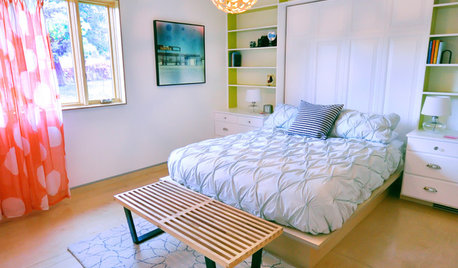
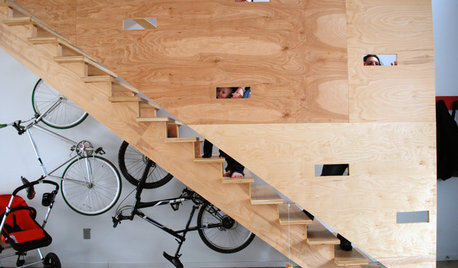
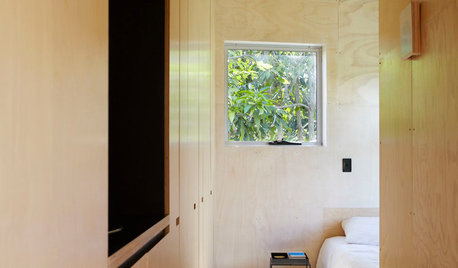
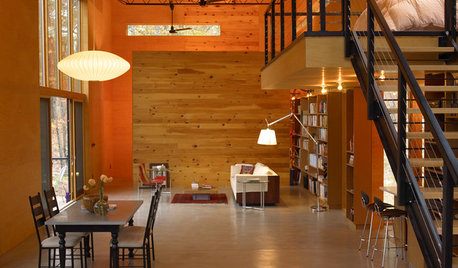

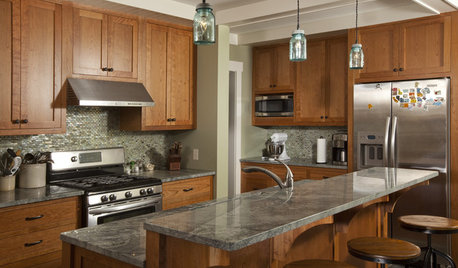
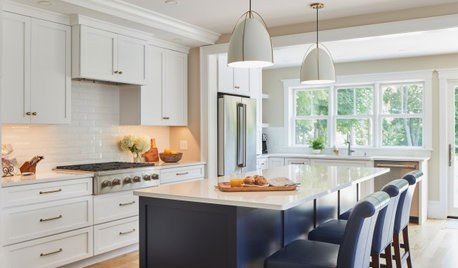
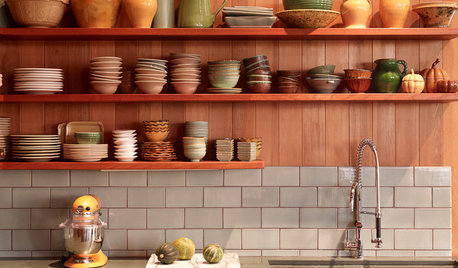








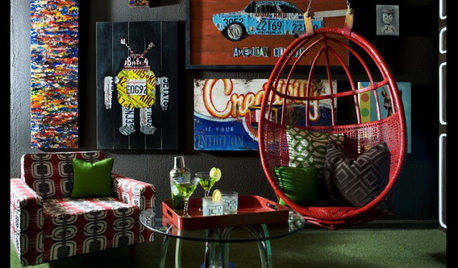
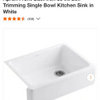



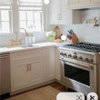
antss